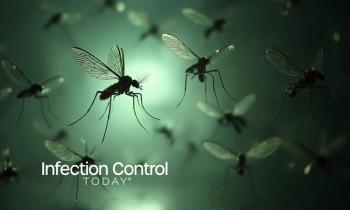
Pathogen Pulse: Updates on Whooping Cough, Oropouche Fever, and Avian Influenza
This Pathogen Pulse highlights: Whooping cough, oropouche fever, and avian influenza. Read on to get caught up on the latest.
This Pathogen Pulse focuses on 3 critical topics shaping public health discussions: Whooping cough, oropouche fever, and avian fevers.
Infectious diseases continue to pose significant public health challenges worldwide. This year, 3 major concerns are grabbing attention: the resurgence of whooping cough, the spread of Oropouche fever, and ongoing global outbreaks of avian influenza. Each disease presents unique risks and complexities, demanding targeted infection control measures.
Whooping Cough
“In 2024, reported cases of pertussis increased across the US, indicating a return to more typical trends. Preliminary data show that more than 5 times as many cases have been reported as of week 41, reported on October 12, 2024, compared to the same time in 2023,” according to the CDC.
Several factors contribute to this resurgence:
- Waning immunity: Immunity from the pertussis vaccine diminishes over time, leaving adolescents and adults vulnerable to infection.
- Vaccine hesitancy: In some communities, reduced vaccine uptake has weakened herd immunity, leading to localized outbreaks.
- New strains: Some research suggests that the bacterium may be evolving, potentially reducing the effectiveness of current vaccines.
The current focus is on increasing booster doses in adolescents and adults, improving infant vaccination rates, and ensuring early diagnosis and treatment to prevent severe cases, particularly in vulnerable populations like infants and older persons.
Oropouche Fever
“The Oropouche virus is primarily transmitted to humans through the bite of Culicoides paraensis midges,” according to the
* “Relating to or denoting certain diseases when
Oropouche fever typically presents with influenza-like symptoms, including high fever, headache, joint pain, and a rash. While most cases are mild, it can lead to more serious neurological complications, including meningitis and encephalitis in some patients. Because it shares symptoms with other diseases like dengue and Zika, Oropouche fever is often underdiagnosed, making it a growing concern for public health systems in tropical regions. There is currently no vaccine for Oropouche fever, so efforts focus on vector control and public awareness to prevent further spread.
Avian Influenza
Efforts to contain the spread of avian influenza include strict biosecurity measures in poultry farms, culling infected flocks, and enhancing vaccination programs for poultry. Monitoring for early signs of cross-species transmission and developing updated vaccines are critical steps in pandemic preparedness for humans. Meanwhile, public health advisories urge avoiding contact with sick or dead birds, thoroughly cooking poultry products, and drinking only pasteurized milk to mitigate infection risks.
The resurgence of whooping cough, the emergence of Oropouche fever, and the persistent threat of avian influenza highlight the dynamic nature of infectious diseases in our globalized world. As new challenges arise, the field of infection control must remain agile, adapting to evolving threats and maintaining preparedness for the next infectious disease threat.
Newsletter
Stay prepared and protected with Infection Control Today's newsletter, delivering essential updates, best practices, and expert insights for infection preventionists.




